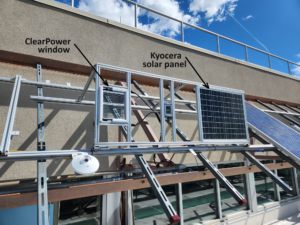Another solar storm is forecast for Earth, meaning residents of several US states may have another chance to see the aurora borealis on Friday night.
The Space Weather Prediction Center has predicted a possible geomagnetic storm to arrive on Friday, May 31 and last until the early hours of Saturday morning. According to the organization, a handful of northern states may end up with suitable viewing conditions.
The phenomena will be the result of the same group of sunspots responsible for the May 10 nationwide aurora display, as they have turned back into view of Earth.
The likelihood that the lights will appear again depends greatly on conditions and location. Here’s what you need to know about your chances for a light show on Friday night.

Space exploration:New research could help predict the next solar flare
Northern lights forecast
The forecast center predicts a geomagnetic storm that will arrive on the evening of May 31 and last until the morning of June 1. The storm is forecast to reach an intensity level of 2 out of 5, a much lower rating than the May 10 storm that was rated a G5 and viewable from all 50 states.
The moderate storm is the result of a coronal mass ejection, or “large bubbles of coronal plasma threaded by intense magnetic field lines that are ejected from the sun over several hours,” according to NASA. The eruption is the result of a solar flare on May 29.
However, the terms are still up in the air.
“Our confidence in the G2 event is low, primarily because we expect most of the solar material from the coronal mass ejection to pass behind Earth’s orbit,” said Shawn Dahl, a senior forecaster for the forecast center. “However, there were indications in our analysis that Earth could receive a side impact or near proximity, and based on that chance, our forecasters saw the potential for G2 levels if that happened.”
As the days get longer, it’s harder to see the aurora, he added, since the dark-sky windows are shorter. Furthermore, there should be a favorable coupling between the coronal mass ejection and the Earth’s magnetic fields during the viewing time.
He recommended that those wishing to see the northern lights monitor the forecast center’s website for updates and conditions.
Which states will have a chance to see the northern lights?
“The aurora may become visible over several northern and upper Midwest states from New York to Idaho,” the Space Weather Prediction Center posted at X.
Some states that are more likely to catch a glimpse include:
- New Hampshire
- Vermont
- Maine
- New York
- Michigan
- Maine
- New Hampshire
- Massachusetts
- Rhode island
- Wisconsin
- MINNESOTA
- North Dakota
- South Dakota
- Montana
- Wyoming
- Idaho
When is the best time to see the northern lights?
In general, northern lights viewing is best during the darkest hours of the night and early morning.
Friday’s lights should be observable between 11 p.m. Friday and 1 p.m. Saturday, although they can be seen until about 3 a.m., according to the National Oceanic and Atmospheric Administration.
“If G1-G2 conditions do materialize … tonight will most likely be the time to be on the lookout — much less likely Saturday night,” Dahl said.
What are the northern lights?
The northern lights are a brilliant glow seen around the magnetic poles of the northern and southern hemispheres, according to the University of Alaska Fairbanks Geophysical Institute. Known for creating colorful streaks of light in the night sky, the aurora borealis are the northern lights, or aurora polaris, that appear in the northern hemisphere.
The southern hemisphere has its own polar lights known as the southern lights, or aurora australis, which create their own dazzling display.

What causes the northern lights?
Simply put, auroras are the result of the sun’s interaction with Earth’s atmosphere. A collision between electrically charged particles from the sun and gases in Earth’s atmosphere produces a series of tiny flashes that look like moving lights in the sky. Charged particles are attracted to the North and South poles by the Earth’s magnetic field.
While this magnetic field usually shields Earth from solar winds, the winds can occasionally become strong enough to override the field, allowing particles and gases in the magnetosphere to interact and generate colorful displays, according to the Geophysical Institute and the Canadian Space Agency.
#northern #lights #tonight #Heres
Image Source : www.usatoday.com



